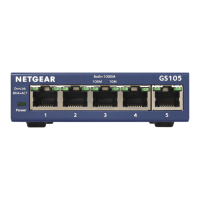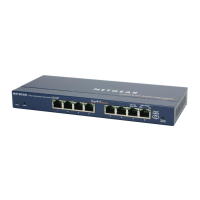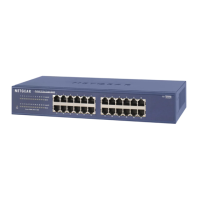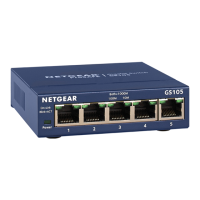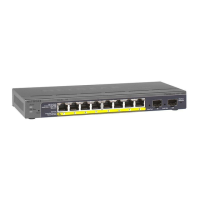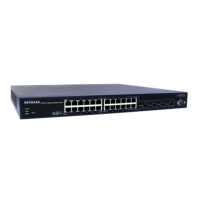System
21
XS728T ProSAFE 28-Port 10-Gigabit L2+ Smart Switch
• Neighbor State. Specifies the state of the neighbor cache entry. The following are the
states for dynamic entries in the IPv6 neighbor discovery cache:
• Reach. No more than ReachableTime milliseconds have elapsed since confirmation
was received that the forward path to the neighbor was functioning properly. When in
REACH state, the device takes no special action as packets are sent.
• Stale. More than ReachableTime milliseconds have elapsed since a confirmation was
last received that the forward path was functioning properly. While in STALE state,
the device takes no action until a packet is sent.
• Delay. More than ReachableTime milliseconds have elapsed since a confirmation
was last received that the forward path was functioning properly. A packet was sent
within the last DELAY_FIRST_PROBE_TIME seconds. If no confirmation is received
within DELAY_FIRST_PROBE_TIME seconds of entering the DELAY state, the
device sends a neighbor solicitation message and changes the state to PROBE.
• Probe. A confirmation is actively sought by repeatedly sending neighbor solicitation
messages every RetransTimer milliseconds until a confirmation is received.
• Last Updated. Elapsed time since the address was last confirmed as reachable.
Time
The switch software supports the Simple Network Time Protocol (SNTP). You can also set
the system time manually
SNTP assures accurate network device clock time synchronization up to the millisecond.
Time synchronization is performed by a network SNTP server. The software operates only as
an SNTP client and cannot provide time services to other systems.
Time sources are established by stratums. Stratums define the accuracy of the reference
clock. The higher the stratum (where 0 is the highest), the more accurate the clock. The
switch is a stratum 2 device, and as such accepts stratum 1 or higher time indications.
The following is an example of stratums:
• Stratum 0. A real-time clock is used as the time source, for example, a GPS system.
• Stratum 1. A server that is directly linked to a stratum 0 time source is used. Stratum 1
time servers provide primary network time standards.
• Stratum 2. The time source is distanced from the stratum 1 server over a network path.
For example, a stratum 2 server receives the time over a network link, through NTP, from
a stratum 1 server.
Information received from SNTP servers is evaluated based on the time level and server
type.
SNTP time definitions are assessed and determined by the following time levels:
• T1. Time at which the original request was sent by the client.
• T2. Time at which the original request was received by the server.
• T3. Time at which the server sent a reply.
• T4. Time at which the client received the server's reply.
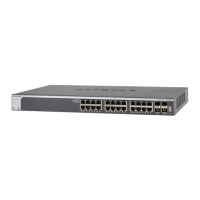
